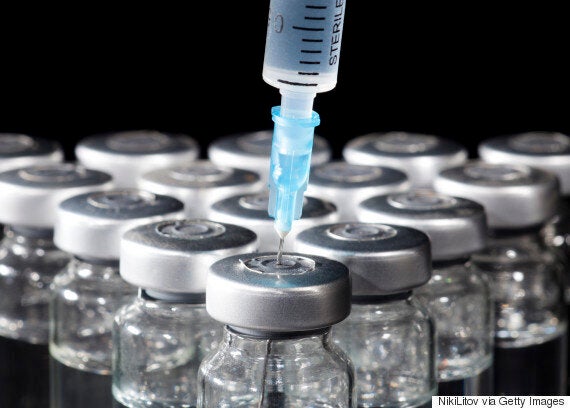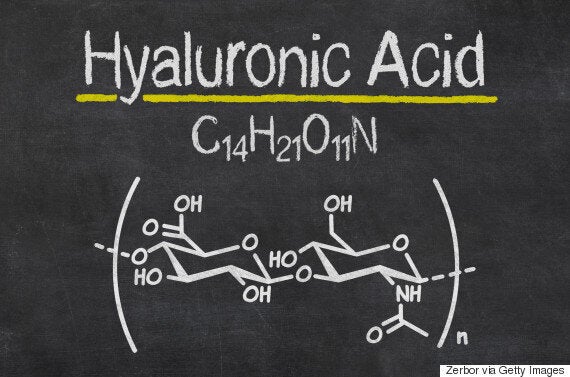With summer approaching, Canadians around the country will forsake their homes -- and their winter wear -- to take in the warmer weather and soak in the rays of the sun. Yet, as many of us know, there are consequences to getting too much of this very good thing. While solar infrared radiation is a pure delight of heat, ultraviolet light can lead to a variety of troubles, including skin damage due to dryness and oxidation.

Combating this consequence is not all that difficult, mind you. Numerous cosmetics now line store shelves, all offering varying degrees of repair. Those most effective usually contain ingredients known to improve hydration and anti-oxidation. These include Vitamin E, aloe vera and jojoba oil. There is one more scientifically proven ingredient gaining popularity in some beauty lines. It's known as hyaluronic acid and unlike the other ingredients this molecule is a part of our own bodily production.
Hyaluronic acid, or HA as it's more commonly known, is little more than a long chain of sugar molecules similar to a starch. The molecule is made in various areas in the body such as the eye and the joints but is found mainly in the skin. Closer inspection over the last few decades has revealed a very simple but important role. It helps to repair injury.
When a wound occurs, whether on the skin or in the muscles, HA acts as a sticky foundation for healing cells. This allows for the formation of a cellular matrix designed to ensure proper healing. When the structure is in place, the acid degrades allowing the process to continue.

The rather unique ability of HA to improve healing has led many researchers to consider whether it could be used in biomedical applications such as injections and implants. The work has been fruitful and led to the clinical use of the acid in dermatology and arthritis.
Along the way, scientists also discovered a rather intriguing side-effect. Whenever HA was used, infections seemed to be less likely. Back in 2006 researchers felt this was a consequence of antimicrobial peptides known to attach to the acid. Yet by 2011, the molecule alone appeared to be involved in reducing the chances for pathogen colonization. Even more interesting was the range of pathogens affected by the acid. They were not only skin-related, but also involved in oral, respiratory, and bloodborne infections.
Although the results of these studies appear to be promising, one significant factor has been left out. No one has revealed how HA actually prevents infection. But that has changed thanks to an Italian group of biomedical researchers. They have taken an in-depth examination of the work done to date and revealed how the molecule works to prevent infection. The results reveal an intriguing mix of molecular competition and an intrinsic means to negate one of a pathogen's useful weapons.
Considering the possible benefits, there is no reason not to explore this route.
The first order of business was to determine how HA prevents binding of bacteria to skin and other composites, such as implants. While several options were examined, only one appeared to have the most compelling evidence. It also happened to be same reason behind the use of this compound in cosmetics: hydration.
When pathogenic bacteria invade an area, they tend to exclude water so they can stick together more tightly. This enables them to form colonies known as biofilms. Once a biofilm is in place, the bacteria are incredibly difficult to remove and exhibit resistance to a variety of disinfectants and antibiotics. Should the species be pathogenic, this could lead to an infection.
The addition of HA to the environment increases the amount of water in the area, making it difficult for bacteria to find a home. Through inclusion of water within the matrix -- known as a hydrogel -- the benefits are increased such that the bacteria can be killed easily with simple antimicrobial compounds.

Once the team had established the basis for preventing colonization, they went into the realm of clinical trials to determine whether HA was effective at preventing disease. While only a few trials had been conducted, they all revealed the addition of HA was beneficial in keeping people healthy. The types of conditions included earaches, adenoiditis, urinary tract infections and gingivitis.
For the authors, this combination of mechanism and clinical evidence reveal the potential for hyaluronic acid in keeping us safe from pathogens. While none of these methods have made it to market quite yet, further trials should eventually lead to preventative treatments in the coming years. Considering the possible benefits, there is no reason not to explore this route.
There is another benefit to furthering development of HA for health. This molecule may help us keep the post-antibiotic era at bay. If we can prevent infections before they begin, we can reduce the amount of antibiotics used in medicine. In light of the wide array of uses already known -- and possibly more to come -- we may have a simple yet effective way to use our own natural chemistry to keep us safe.
Follow HuffPost Canada Blogs on Facebook
Also on HuffPost: